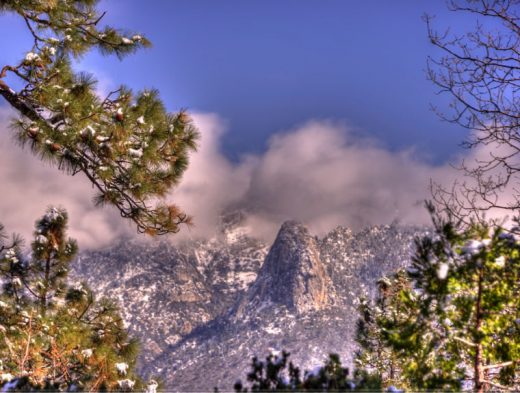The winter of 2017-18 has been exceedingly dry and warm, until the past two weeks, which have been very cold, damp and wet. However,

Photo by Tom Pierce
this small amount of precipitation is still substantially below historical averages. Cal Fire’s Southern Operations Predictive Unit advises regional fire officials to “expect some fire activity in every calendar month during 2018.”
Last Tuesday, the Hill awoke to the first measurable snow fall in a year. In the past 70 years, the average annual snowfall has been about 38 inches. While Pine Cove received close to 10 inches from the Tuesday storm, Idyllwild captured less than 5 and Saturday night brought about another inch. That’s less than or barely equal to 20 percent of the historic average.
While this weather pattern is unusual, it has precedence on the Hill. In the winter of 1968-69, no snow fell until March. Then, 13.5 inches were recorded. Two years later, no snow fell until March again. Only half an inch fell during March, but 4.5 inches came in April. Most recently, during the winter of 1983-84, no snow was recorded until about 5 inches arrived in April.
Last week, the U.S. Forest Service’s Keenwild Ranger Station recorded nearly an inch of precipitation, most of that probably melted snow. Most of the precipitation from the two storms fell further north in the San Bernardino Mountains.
Since Oct. 1, Keenwild has recorded 5 inches of precipitation. The average precipitation in that five-month period is about 16.3 inches and normally another 4.1 inches fall in March.
During the 2016-17 rain year, Keenwild recorded about 22 inches and the Pine Cove site recorded about 34 inches of rain and another 60 inches of snow.
The Predictive Services Unit says “…a warmer and drier pattern is expected to continue the next 4 months … It is possible that there may be a ‘precipitation rally’ this spring like in 2011-2012, which may bring a brief pause in the fire activity across the state.”
As a consequence of the extended dry winter, often a La Niña weather pattern, a drought condition, could return to Southern California.










